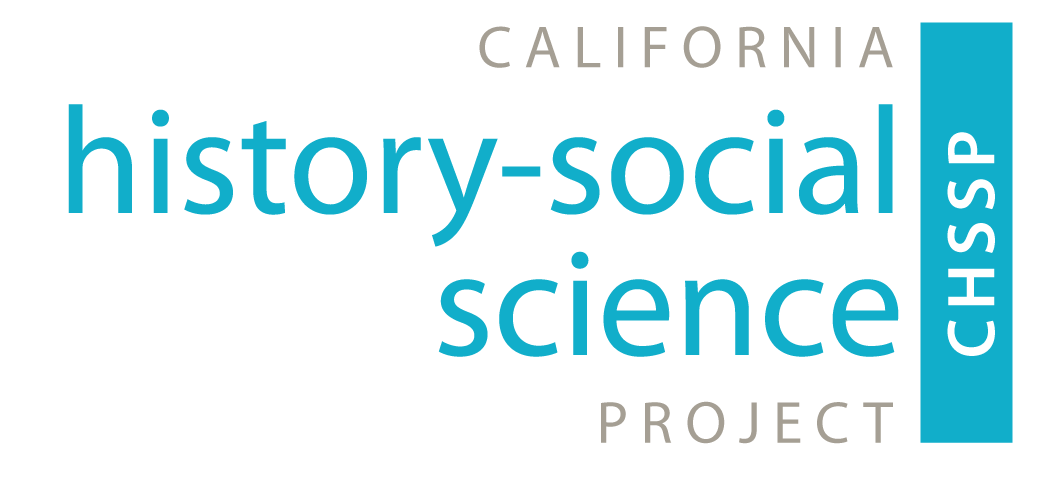The Future of History Education
*The following post is excerpted from an opening address by CHSSP Executive Director Nancy McTygue at the opening session of the Teaching the Past for Tomorrow Conference, held November 6-7, 2015, at UCLA.
I want to start this conference by saying thank you to all the teachers and scholars who have worked with us over the last 25 years. Thank you for your creativity, your hard work, your commitment to your craft, and most especially, your students. Any success we’ve had as an organization is due to the hard work of our teachers and scholars, working together to improve their own instruction and the education of students across California.
I also want to think with you about the future of our discipline – What will the next 25 years mean for history education?
The last 15 years have been difficult for history educators, given the marginalization of the discipline and the economic recession. Fewer students took history, fewer teachers taught it, and those that did had less resources and support than they needed.
Today I believe we are at a crossroads. Much attention and funding have been dedicated to the implementation of the Common Core, and later, English Language Development Standards. While neither of these detail specific historical content to be taught at a grade level, they both acknowledge the important role that history plays in the development of student literacy and critical thinking. And, I would argue, if teachers are given enough resources, training, and time to truly teach the way these new standards suggest, student learning should improve.
We’ve ended standardized testing in history in California, and while many welcome relief from the multiple choice tests of the past, others worry that this signals further marginalization, believing in educators’ constant worry about what’s not tested isn’t taught. We’ve been promised that history will be included in the new assessment and accountability system, but besides regular mention of “multiple measures,” no one seems to know exactly what it will look like.
While there doesn’t seem to be the political will to take on updating California’s current standards in history-social science – a task, let me be clear, that needs to be done - it does look like we’re going to get a new framework. (By the way, I hear it’s pretty good…) The challenge to update our standards and framework demonstrate once again just how much our discipline has become both politicized and relevant to the general public.
And with the adoption of the new framework, there will be once again the opportunity for schools to adopt new textbooks, if they want to spend their now incredibly flexible dollars on history books, a question I suspect will vary from district to district.
So we’re at a transition. We’ve got a massive instructional shift underway, but significant questions remain for our own content standards, history-specific instructional resources, the allocation of resources to support teacher professional learning in history, and the discipline’s specific role in the assessment and accountability system. In response to this lack of clarity, I see three options – 1) Keep our heads down and hope it all settles down without really impacting us and what we do, 2) Trust that others will see the intrinsic value of our discipline and advocate for an increased role for history and the related social sciences, 3) Reclaim our role as an integral part of a multidisciplinary curriculum that all of California’s children need and deserve. I vote for the last one.
It is our responsibility in this transition to lead this conversation, to define what quality instruction in history looks like, to demand the resources needed to accomplish that level of teaching, and to hold ourselves accountable as a profession for providing quality instruction for our students.
We need to forcefully and consistently push back against the recent marginalization of history-social science by documenting how and what children learn in our classrooms, and by sharing their learning with our colleagues, our administrators and school board members, parents, and community members. We need to give presentations, have individual conversations, write letters and blogs, post on social media, and become more engaged.
For the last four years, I have served as a member of the Instructional Quality Commission, and if I have learned anything during this time, it is the value and power of engagement. I know it should have been obvious to me earlier in my career, but until I was in that position, I never truly understood the concept of contingency – educational policy decisions are honestly not pre-ordained, and individual citizens can make a tremendous impact by petitioning their representatives.
We need to do all this not just because we’re self-confessed “history nerds.” It’s also not enough to argue that history has always been part of the curriculum, as if tradition is the best reason to do anything. No, the reason we need to do this is quality instruction in history helps students grow, learn, and become competent and engaged adults, motivated and capable participants in a democratic society.
And so, as you participate in and hopefully enjoy your time here at our 25th anniversary conference, I hope you will also think about how you’d define what real learning in history looks like and how you can help make it a reality for the students in your class, in your school, and in your community. California’s children deserve no less.
